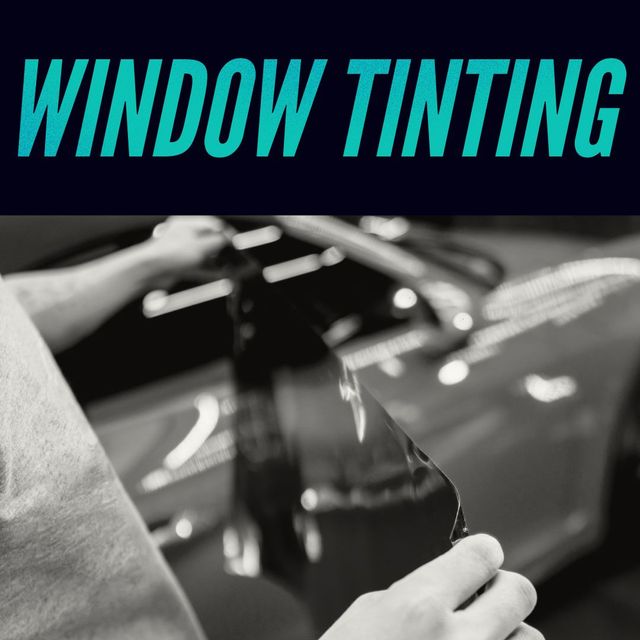Vehicle Window Tinting: What to Anticipate Throughout the Installment Refine
Vehicle Window Tinting: What to Anticipate Throughout the Installment Refine
Blog Article
Home Window Tinting Laws and Standards: What You Required to Know Prior To Tinting Your Automobile
Prior to continuing with home window tinting for your car, it is necessary to familiarize on your own with the diverse regulations and standards that control this technique across different states. These policies determine the permissible degrees of tint darkness, often gauged by noticeable light transmission (VLT) portions, and consist of particular specifications for front windshields intended at guaranteeing roadway safety and security. Additionally, particular jurisdictions might use medical exceptions for people with certifying problems. Understanding these intricacies can conserve you from prospective lawful ramifications, however what are the certain regulations in your state?
Overview of Home Window Tinting Laws
Home window tinting legislations are frequently based on variant throughout different territories, reflecting local regulations and security factors to consider. These legislations dictate the permitted levels of color darkness and reflectiveness on car home windows, making certain that chauffeurs keep adequate visibility while also safeguarding against unsafe UV rays and warm.
Most laws identify window tinting based upon the Visible Light Transmission (VLT) percentage, which indicates the quantity of light that can travel through the home window. Generally, lower VLT percents represent darker colors. Regulations frequently separate in between the front, side, and back home windows, with more stringent limitations used to the front windscreen to improve safety for both the driver and other road individuals.
Additionally, some jurisdictions enforce restrictions on the reflectivity of the color, stopping extreme glow that could impair visibility. Exceptions to these legislations might exist for people with certain medical problems calling for added sun protection. Conformity with home window tinting regulations is critical, as offenses can lead to penalties, required removal of the color, and prospective increases in insurance coverage costs. It is essential for automobile proprietors to acquaint themselves with local laws prior to continuing with window tinting setups.
State-by-State Tint Rules
Recognizing the specific window tinting guidelines in each state is vital for vehicle owners seeking to abide with the regulation. Each state in the U.S. has developed its own set of regulations regulating home window tinting, which can vary significantly. These guidelines frequently determine the permitted levels of tint darkness, the types of windows that can be tinted, and any type of clinical exceptions that may apply.
For instance, states like California have stringent constraints on tint darkness for front home windows, while others, such as New Mexico, might allow darker colors. Furthermore, particular states mandate particular visibility percentages for numerous home windows, consisting of the windscreen, front side windows, and back home windows. It is critical for automobile owners to acquaint themselves with their state's laws to prevent possible fines or charges.
In addition, some states might need a qualification sticker to be positioned on tinted windows, suggesting compliance with state regulations. Failure to comply with these laws not only risks lawful consequences however can also impact security and presence while driving. Lorry proprietors should carry out complete research study or consult neighborhood authorities to make certain full understanding and compliance with state-by-state tint laws.
Allowed Tint Types and levels
Several vehicle proprietors may be amazed to find out that permitted color levels and types differ extensively across different states. Each state has established its very own regulations relating to the permissible darkness and reflectivity of window color, usually measured by Visible Light Transmission (VLT) percentages. VLT describes the amount of light that can go through the tinted home windows; thus, a reduced portion indicates a darker tint.

Moreover, the sorts of tint products permitted can vary, with some states prohibiting metallic or mirror-like finishes. It is crucial for car owners to acquaint themselves with their state's certain legislations to make sure compliance. Non-compliance can lead to fines, required elimination of the tint, or other lawful effects, making it important to recognize these laws before proceeding with installment.
Medical Exemptions for Tinting
While not all states give allocations for clinical exceptions regarding window tinting, those that do identify the need visit here for particular individuals to improve presence and convenience because of medical problems. Different clinical problems, such as lupus, skin cancer cells, and specific eye disorders, can provide people especially delicate to sunshine. As a result, these people might require darker tints to secure themselves from dangerous UV rays and glow.

It is essential to note that also with a medical exception, there may still be constraints on the level of tint allowed. Compliance with state regulations makes certain that individuals are both protected and within lawful limitations. Those considering medical exceptions should call their local Department of Motor Vehicles or equivalent authority to recognize the procedures and demands essential to make an application for an exception successfully.
Penalties for Non-Compliance
Stopping working to abide by window tinting legislations can cause substantial fines, which vary by state. Police are encouraged to release citations for lorries that do not abide by the defined tinting regulations. These fines normally include fines, which can range from moderate total up to a number of hundred dollars, depending upon the severity of the infraction and the state in concern.
In some territories, repeated offenses may cause intensifying fines or additional fines, such as required court appearances. Non-compliance may necessitate the removal of unlawful tinting, commonly at the proprietor's expense. In extreme situations, habitual culprits may face suspension of their vehicle enrollment until conformity is accomplished.
In addition, insurance coverage implications might arise from obtaining numerous citations for window tint infractions. Insurers might watch such infractions as an indication of riskier actions, potentially bring about raised premiums or trouble in coverage.
To stay clear of these penalties, it is essential for automobile proprietors to familiarize click here for more info themselves with their neighborhood home window tinting laws and guarantee that their vehicle complies (Window Tinting). This proactive technique not just stays clear of lawful ramifications however additionally advertises roadway safety
Conclusion

The majority of laws classify home window tinting based on the Visible Light Transmission (VLT) percent, which indicates the quantity of light that can pass via the home window. Conformity with home window tinting guidelines is crucial, as offenses can result in penalties, necessary removal of the color, and prospective boosts in insurance policy premiums.Comprehending the details window tinting policies in each state is crucial for vehicle proprietors seeking to conform with the legislation. These guidelines commonly determine the permitted levels of color darkness, the types of windows that can be tinted, and any type of clinical exemptions that might apply.
For circumstances, states like California have strict restrictions on tint darkness for front windows, while others, such as New Mexico, might allow More about the author darker tints.
Report this page